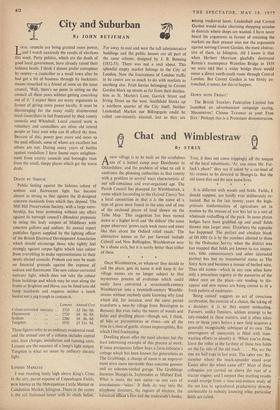LONDON MARKETS
I was standing lately high above King's Cross in the airy, paved expanse of Copenhagen Fields, now known as the Metropolitan Cattle Market or _ Caledonian Market, Islington. There in the centre is .the tall Italianate tower with its sheds ()clew. Far away to east and west the tall administrative buildings and the public houses are all part of the same scheme, designed by J. B. Bunning (1852-55). There was not a soul about. This splendid empty market belongs to the City of London. Now the frustrations of London traffic in its centre are as much to do with markets as anything else. Fruit lorries belonging to Covent Garden block up streets as far from their destina- tion as St. Martin's Lane, Garrick Street and Irving Street on the west. Smithfield blocks up a northern quarter of the City itself. Neither Leadenhall Market nor Billingsgate could be called conveniently situated, lost as they are among mediaeval lanes. Leadenhall and Covent Garden would make charming shopping arcades in districts where shops are wanted. I have never heard the arguments in favour of retaining the markets on their present sites nor the arguments against moving Covent Garden, the most obstruc- tive of them, to Islington. All I know is that when Herbert Morrison gleefully destroyed Rennie's masterpiece Waterloo Bridge in 1939 we were told that a wider bridge there would mean a direct north-south route through Central London. But Covent Garden is too firmly en- trenched, it seems, for this to happen.


































 Previous page
Previous page